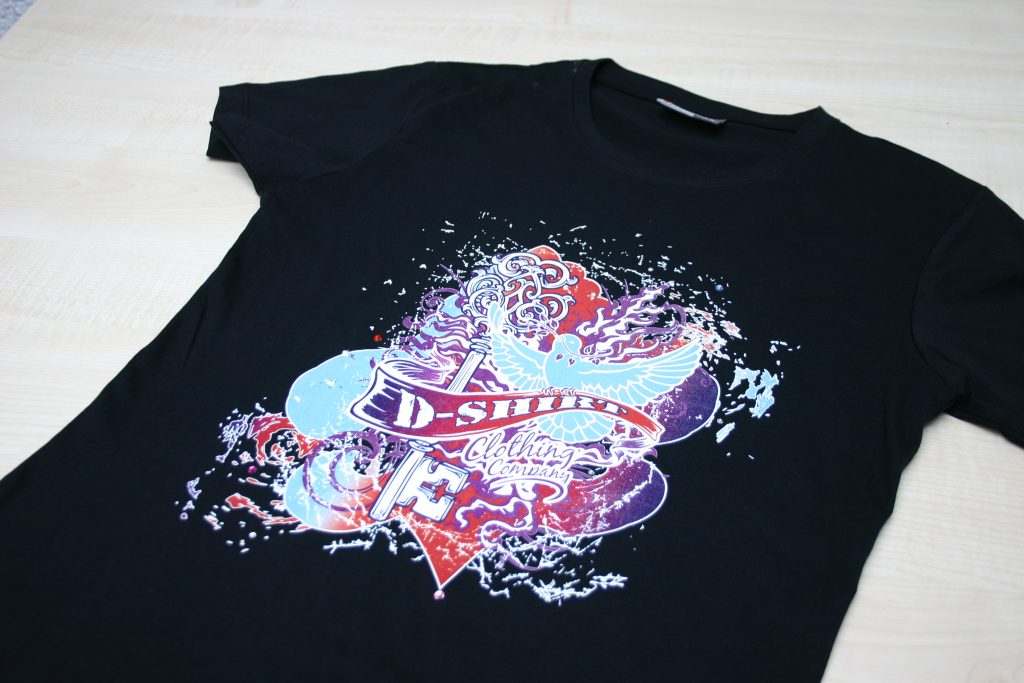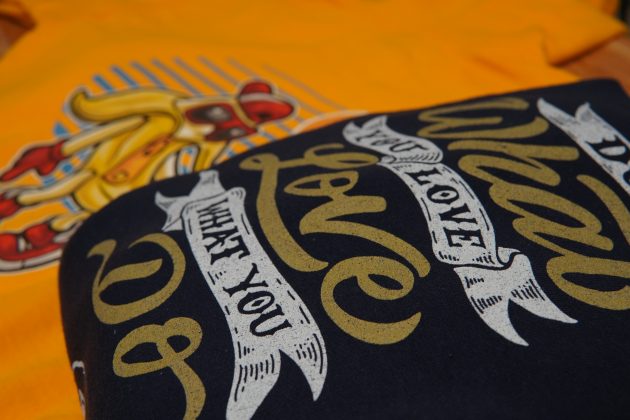
Features
Printing
Textile
Opportunities in apparels
A close look at DTG printing markets and the technologies fuelling demand
March 4, 2022 By Treena Hein
 Direct-to-garmet (DTG) printing allows printers to manage complex designs in varied colours and quantities on multiple fabrics at a low cost. Photo courtesy Kornit Digital
Direct-to-garmet (DTG) printing allows printers to manage complex designs in varied colours and quantities on multiple fabrics at a low cost. Photo courtesy Kornit Digital Everyone in the printing industry is well aware that on-demand custom printing is growing fast and here to stay. In addition to direct mail, this category also includes custom apparel or direct-to-garment (DTG) printing, which allows customers to order one-offs, small batches, carry no stock and update designs easily. Innovation in DTG printers has kept pace with demand, and these machines now offer better colour and resolution than before.
DTG makes the ability to place a photograph, a complex design or a scan of your child’s latest finger painting on fabric a very affordable and exciting reality for individual consumers, companies and organizations alike. Beyond printing on garments like T-shirts and hoodies, DTG machines can print on pillow cases, canvas pieces for wall art, shoulder bags, high-cut running shoes, curtains, hats, napkins and any other fabric surface you can think of.
Indeed, “the opportunities are endless,” says Sharon Donovich, product marketing manager at Kornit Digital. “With the trends and market challenges today, whether excessive inventory, time to market, prices of shipment from remote locations, social media influence or the need for sustainable solutions, the technology and business models must be disruptive and innovative. [With DTG], this can include opportunities for anyone really, from a business that needs a promotional T-shirt to personalized gifts, brand shoppers, e-commerce businesses, print service providers and more.”
DTG, says Donovich, can also supplement screen printing or heat transfer for the medium/small/one-off orders that will not be profitable with other technologies, in addition to handling complicated designs and specialized applications like printing on zippers or buttons.
“There are many benefits,” she explains, “including ability to print short runs or one-offs in no time, in every shape and colour, quickly and sustainably with safe inks – and only after the finished piece has already been purchased.”

DTG enables printers to photo-realistically recreate images and memes resulting from events, causes and thought leadership in real time. Photo courtesy SinaLite
A changing market
Robert Zoch, Kornit’s global content manager, adds that no matter where you are situated in the printing industry, “you’ve undoubtedly been impacted by commerce migrating to the internet. It is an ideal time to introduce efficient, eco-friendly, digital DTG printing.” He adds that during the pandemic, in many cases, on-demand printing shops repurposed their production floor using DTG technology to supply customized face masks and fulfil other unforeseen needs.
Zoch notes that the garment printing market has been evolving for some time from a focus on brick-and-mortar retail stores to e-commerce. In fact, e-commerce doubled its total volume over the last 10 years during just a three-month period in 2020, he says.
“By 2024, it’s predicted that two-thirds of apparel in the U.S. will be purchased online,” Zoch adds. “DTG is capable of delivering imprinted gear at the speed today’s buyers have come to expect. Further, available workflow solutions offer end-to-end visibility and control, integrating point of sale, product catalogs, production floor and shipping logistics to enable streamlined, cost-effective operations and superior customer experience.”
Zoch also stresses the importance of another trend driving DTG growth that Donovich touched on: the strong desire among today’s consumers to express themselves like never before via social media and in person. “Fast fashion, micro-moments and instant gratification are the norm,” Zoch explains. “DTG means you can produce to meet demand resulting from events, causes and thought leadership in real-time and recreate images and memes in photorealistic detail. Any inspiration appearing on Etsy can appear on a garment, and DTG fulfillers can meet that need for private creators and creative online entrepreneurs.”
DTG makes every order profitable, he says, and removes all restrictions in terms of a printing firm having to say no to any job. Screen printing handles the large, low-colour jobs, while DTG manages complex designs in any colour in any quantity, on multiple fabrics as needed, and all for a low and consistent cost. He notes that he’s visited countless print businesses that have grown at a staggering pace by supplementing e-commerce with DTG production even during the pandemic-induced recession in 2020.
Sinalite’s journey
At its 100,000-sf facility in Markham, Ont., wholesale family-owned printer Sinalite “strictly services the print industry with apparel products,” explains vice-president Brian Meshkati. “So, the customers buying apparel from us are print brokers, sign shops and commercial print shops. They’re looking to expand their existing print product selection to their customers by offering custom apparel to them as well. We give our customers the ability to test the market, so they don’t need to risk investing hundreds of thousands of dollars on apparel equipment. They receive orders from their customers, order from us and mark it up to profit. If they see that the demand is there and want to invest in equipment later on, they can.”
Meshkati says compared to commercial printing, the custom apparel printing market is growing at a substantially higher rate. While researching this type of printing, he and his colleagues found a report published by Grand View Research which stated that in 2018, the global market for custom apparel had been worth over USD26 billion, with an expected compound growth rate of over 10 per cent every year to 2025.
At present, those ordering from Sinalite our print brokers. These brokers are ordering on behalf of their customers spanning various industries including landscapers and property management companies, construction contractors, retailers and restaurants. “We also see a lot of orders for personal use that allows customers to express themselves, and they can buy a single shirt,” says Meshkati. “In terms of garments, we print a variety of items. T-shirts are the most popular, followed by hoodies. We also print on sweatshirts, long sleeve shirts and tank tops. We actually saw increased custom apparel sales after the pandemic hit. We got over four times the usual number of T-shirt orders.”
Sinalite purchased its first DTG printer (a Kornit Digital ‘Storm,’ intended for sub-500 runs) a couple of years ago and during fall 2021, added a Kornit Digital Avalanche HD6. Meshkati says they’d found the Storm “a great machine in terms of quality.” Sinalite went with Kornit again because the machines do not require workers to take an additional pre-treating step. “We got the Avalanche to take on the higher volumes we were getting,” he explains. “We get a mix of single-piece runs, but also some orders that are in the hundreds of pieces, so it’s good to be able to do both.”
A quick look at the tech
Among the other DTG printers on the market, Brother, Omniprint, Roland and Epson each offer different machines for various volumes/purposes. Brother has a video to help calculate ROI using basic and more complex factors on the purchase of a DTG printer. You can watch the video at https://vimeo.com/497738246.
Every company is constantly innovating to bring improved products to market, including more automation features. As a specific example, in terms of how Kornit machines have evolved and what new capabilities will be added, Donovich reports that in 2021 they introduced ‘MAX’ technology that provides higher quality with high-volume orders. In addition, the company’s XDi Technology enables embossed applications, mainly digital embroidery simulation, high-density embellishments and ‘heat transfer’ look and feel.
This article originally appeared in the January/February 2022 issue of PrintAction.
Print this page